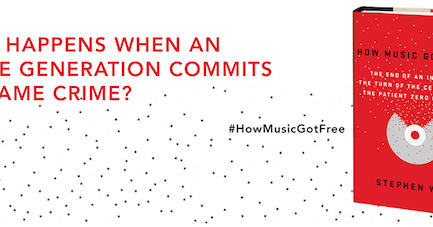

Milner also highlights important connections between commerce, broader social forces, and technical innovations in recording. (Even microphones were once controversial!) Greg Milner presents a nuanced and balanced discussion of each competing (and enhancing) development over the years. Turns out, we’re not the only generation with competing ideas about what sounds (and works) best. What is the most significant divide in the story of recording technology? Analog vs. Like all good history, Perfecting Sound Forever provides perspective. Perfecting Sound Forever: An Aural History of Recorded Music In all these accounts, one thing becomes extremely clear-the history of recorded sound is full of change with various winners and losers along the way. And in the 1950s, the New Jersey mob ran a record pirating ring from its own large duplicating plant. Edison tried to develop a talking doll with a small cylinder player inside (spoiler alert: that didn’t work out). Alexander Graham Bell designed and tested a recording device using an actual human ear and part of a skull from a cadaver. Sound Recording is well-crafted, if a bit staid. With the music industry currently in a time of drastic transition, it is worth pondering the possible positive impact of innovations in development now. Alan Blumlein demonstrated the first “binaural” recordings, acetate discs dramatically improved the economy of recording, and the wide deployment of jukeboxes created a future market for records (which wore out easily) and provided a new kind of access to and for music consumers. In this time of uncertainty, however, recording technology developed significantly. The combination of the expansion of broadcast radio and the Great Depression dealt a severe blow to the record industry. Incidentally, that decade proves a poignant example for comparison to our own time.

That his middle chapter is “The Crucial 1930s” illustrates as much. Sound Recording: The Life Story of a Technology is a helpful guide to the journey.ĭavid L. The long and winding road from the “phonautograph” recording demonstration in 1857 France to the ubiquitous MP3 of today is full of wrong turns and stubborn resistance to change (new Edison wax cylinders were still available for purchase into the 1960s, for example). Recording on tinfoil? Wax? Even compared to an 8-track tape, that is downright primitive. Sound Recording: The Lifestory of a TechnologyĮarly attempts at sound recording were a bit like my own pre-teen efforts at coding a card game in BASIC-interesting and mildly promising, but resulting in a marginally useful outcome.


 0 kommentar(er)
0 kommentar(er)
